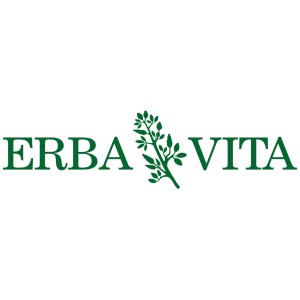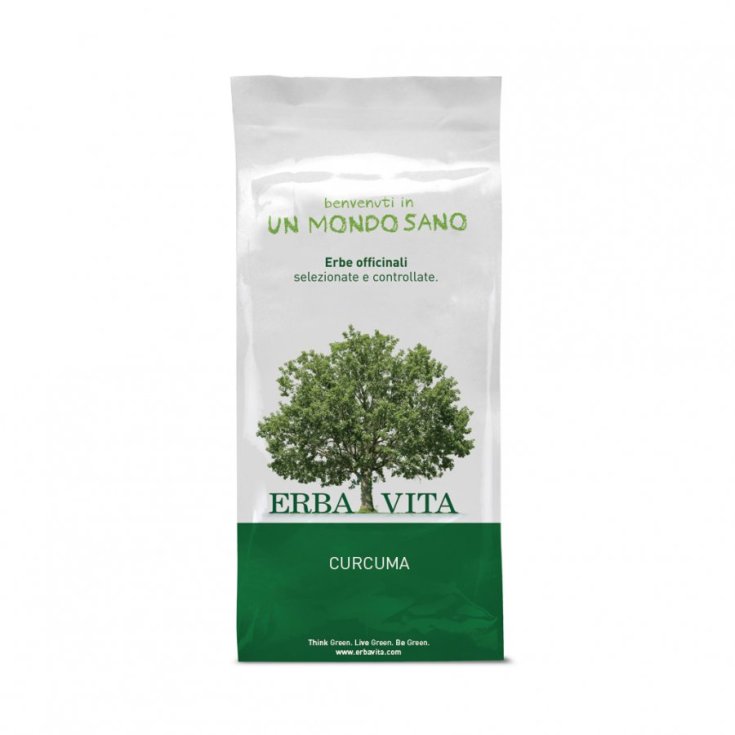ErbaVita Tisane Turmeric 100g

- Brand: ERBA VITA GROUP SpA
- Product Code: 938906346
- EAN:
- Availability: In Stock
- Purchase 3 items for 4.05€ each
- Purchase 4 items for 3.96€ each
- Purchase 5 items for 3.88€ each
ErbaVita
Herbal teas
Turmeric
Turmeric is considered the gold of India, thanks to the enviable health of the people who use it daily in the kitchen but also thanks to its emerging role, on a scientific level, as a natural healing tool. Turmeric is a staple of Indian cuisine, it is present in almost every dish that crosses the table, and it is the spice that gives the typical yellow color to curry.
About thirty years ago, scientists observed that the incidence of chronic diseases in the Indian population was considerably lower than that of Western countries, and related it to the important daily consumption of the spice, which they had already noticed. Therefore they began to study the healing and preventive capacities of turmeric, which were attributed to the active ingredient that characterizes it: curcumin, a compound that exerts a powerful antioxidant and anti-inflammatory action, as demonstrated by thousands of studies conducted on animals and humans. . Turmeric has multiple therapeutic actions, it is no coincidence that it has been used for over two thousand years by Indian and Chinese healers to treat various diseases, from cancer to cardiovascular diseases.
Ayurvedic medicine, the ancient Indian medical system, treats heart ailments with turmeric preparations and suggests regular consumption of turmeric to lower cholesterol. Modern research has amply demonstrated that curcumin has a protective action on the heart, linked to its antioxidant activity. In fact, oxidative stress, due to an excess of free radicals (substances that we normally produce during the metabolism of the body and that we increase due to pollution, smoking, stress, alcohol, drugs, ...), can cause a cell damage leading to various chronic diseases including cardiovascular ones. Antioxidant substances, such as curcumin, are molecules that protect the body's cells from free radical damage. For this reason, curcumin-based capsules and tablets are now on the market to be used as a supplement for various health problems related to oxidative stress and for the "anti-cholesterol" action. Several studies demonstrate the effectiveness of curcumin in the form of a supplement at a dose of 500 mg per day in reducing the levels of LDL cholesterol (the "bad cholesterol"), while simultaneously increasing the levels of HDL cholesterol (the "good" one), already in only one week.
Curcumin appears to act in the liver by promoting the excretion of low-density lipoproteins (LDL), which transport cholesterol from the liver to peripheral tissues, and by stimulating the liver to produce more bile, thus helping to eliminate excess cholesterol. The protective effect of turmeric occurs at much lower dosages than those used in common supplements, but only if consumed consistently over time. Thanks to its daily use in the kitchen, as the oriental tradition teaches us, great health benefits are obtained. It has been estimated that in India an individual ingests on average a teaspoon of turmeric per day spread over three meals, an amount sufficient for Indians to enjoy good health and have a lower incidence of chronic diseases typical of Western countries.
Together with garlic, ginger and onion, turmeric has proven to be one of the most effective foods in reducing "bad" cholesterol (LDL) and platelet aggregation.
How to use turmeric in cooking
Curcuma longa is a perennial herbaceous plant of the Zingiberaceae family, it develops a rhizome (the underground portion of the stem), which is harvested once a year, boiled, dried and pulverized. The result is a powder, inside which the precious curcumin is present. Usually it is sold already ground as the rhizome is very hard to grind. It is found in most supermarkets in the spice department, specialty drugstores or Indian grocery stores. Its taste is delicate and the color is yellow, bright and intense, and can vary in tone.
Turmeric , "discovered" in 1280 by Marco Polo in China, is still imported from tropical places such as India and China.
Once you have purchased a good quality turmeric, it is good to get in the habit of adding it to every dish, even if it can still be a novelty for the western palate. Raw it can have a rougher flavor therefore Indians always cook it, as this spice softens the flavor when cooked. It is sufficient to heat a little olive oil in a pan and add the turmeric to rain, stirring so that it does not burn: if the spice is fresh, its scent will soon be felt.
Using it in the kitchen is really simple, just remember to add a tip of a teaspoon per person, while cooking each dish. For example, you can heat a little oil in a pan, add the turmeric and finally some cut vegetables to sauté, moving them constantly and leaving them a little crunchy. Or you can add turmeric in classic meat or fish recipes, or even add it when cooking rice pilaf or in legume soups.
Do not confuse curry, which is tastier, with turmeric, which has a decidedly more delicate flavor. In fact, curry is not a spice but a combination of spices that the British invented in the 1700s typically including coriander, cumin, fenugreek, black pepper and the inevitable turmeric, which gives it the yellow hue. The curry used in the West is a standard blend of spices that never took hold in India where the spices are combined at the moment with different combinations depending on the aroma that you want to impart to the dish. The curcumin concentration of curry is evidently lower and proportional to the extent to which turmeric is used in the composition of the powder.
The use of turmeric, to date, does not justify the suspension of the statin in the primary or secondary prevention of ischemic heart disease.
Format of 100g

